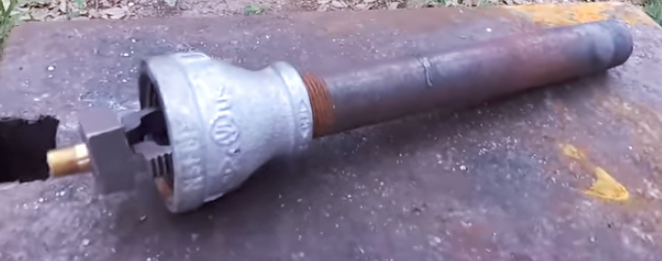-
Posts
20 -
Joined
-
Last visited
Content Type
Profiles
Forums
Articles
Gallery
Downloads
Events
Everything posted by Jacob Palmer
-

Thermal Cycling/Normalizing Questions
Jacob Palmer replied to Jacob Palmer's topic in Heat Treating Knives, Blades etc
By below conversion you mean below critical temperature, right? For most 10x steel the crit is around 1500f, so just under that? Or lower? -

Thermal Cycling/Normalizing Questions
Jacob Palmer replied to Jacob Palmer's topic in Heat Treating Knives, Blades etc
When doing the three normalizing cycles should I let it cool to room temp or to black each time? I'm mostly looking for a standard rule of thumb sort of thing. I just want to make the chances of a good heat treat as high as I can doing it myself, without going to some crazy measures. -

Thermal Cycling/Normalizing Questions
Jacob Palmer replied to Jacob Palmer's topic in Heat Treating Knives, Blades etc
I am working with 10x series steel. I think for this knife it is either 1084 or 1095 I cannot remember exactly though. -
I'm working on a short-ish blade right now, and I'm trying to make my chances of a successful heat treat as high as possible. I know all most of the basics and some of the chemistry, but I still have one question: What is the best method of thermal cycling/normalizing? I know that you should get it to crit temp then let it cool to black, or room temp, but how many times should I do this? What I've been doing is heating it up to crit, letting it cool to black (I do that three times in a row) then I heat it a little bit above crit and let it cool to room temp, then I heat treat. It's worked so far, but y'all probably have more experience than me. Thanks, Jacob
-
I actually used the body of a Harbor Freight weed burner for my torch. It only has a little valve near the burner bit. Is that a regulator? (I used the usd 19.99 one.)
-
I have recently built a Frosty Tee Burner for a gas forge of mine. Is it absolutely imperative to have a regulator attaching to the propane tank? There is already a valve on the burner. If I do absolutely need one, can someone point me to where I could get a cheap and good one? Thanks, Jacob
-
There are two types of firebricks: hard and soft. From what I've heard hard firebricks take longer to get hot but are cheaper than soft firebricks. And soft firebricks the opposite. Is it imperative to use soft firebricks? I mean I'm making my first gas forge and I have a budget limit. Getting the amount of soft firebricks I need could cost upwards of 70$ usd. But hard firebrick from like homedepot could cost only 30$ usd. Which do I choose?
-
I just recently built a Frosty T burner. I bought 0.035 and 0.025 mig tips. The 0.025 worked best for me though I used a strange setup. Experiment with grinding the tip down a little. You could also try regulating the amount of oxygen that gets to the gas.
-
Where'd you get the coating?
- 5 replies
-
- gas
- firebricks
-
(and 1 more)
Tagged with:
-
Nice! How many bricks did you use? Also, where the heck would I find those bricks? I see some people selling them on Ebay, but it looks kinda shady... And homedepot/lowes only sells hard firebrick.
- 5 replies
-
- gas
- firebricks
-
(and 1 more)
Tagged with:
-
So I assume this has been covered 100 times before, but hear me out: I recently built a Frosty T burner. (And it works pretty well) I had planned to make a gas forge with kaowool and a propane tank, but I learned the extent of the dangers of kaowool. (I already knew it was bad but not this bad) I know there are refractory sealants to protect me from the fumes but I don't want to take that risk. So I want to build a gas forge with firebricks. The issue is: how do I build a stable firebrick forge without welding (and with a low budget) I still don't have access to a welder. I've looked around a lot for info on this and I've found nothing. (Loads more time than an hour this time BTW...) If I made a forge would the brick would I need refractory cement to seal it? Do I even need to support the bricks to make a stable forge? And what type of bricks do I use: soft or hard?
- 5 replies
-
- gas
- firebricks
-
(and 1 more)
Tagged with:
-
Thanks, do you think that the frosty t design would work? It doesn't seem too complex, but is it one of those tried and true methods? The one I ended up building for the foundry was Grant Thompson's Gas Blaster. It worked well, but it was a very complex build. It could be adjusted better, but in the end, was just needlessly complex. That Ron Reil also looks pretty good.
-
Yeah, that's what I was plannin'. Sfeile, I wasn't complaining, I was merely expressing my misfortune with finding information. I have used very similar propane burners before. I was looking for a simpler design than the ones I have made. When I worked on my aluminum foundry I spent months of work on researching. I expected my knowledge to carry over even a little... Read note to Sfeile, the same applies to you.
-
Though I have already checked many forums for burner blueprints. (Like for a stinkin hour) I had not found any that were simple or cheap enough for me. The "Frosty T" looks great and is what I'll probably end up using. Thanks for the suggestion! If I went with this model I would use a tap.
-
I found this youtube video on making a simple burner for a gas forge. I have made a burner to melt aluminum in a foundry before. With most burners (and the one I made) I find that they cost a lot to make or require a lot of up-keep. This one seems almost too simple. What do y'all think? I'm not looking for it to last my whole life but to just get started in gas forges. https://www.youtube.com/watch?time_continue=5&v=67rxU02fv6o (P.S. I would make quite a few modifications like an air flow regulator and such.) Your boi, Jacob
-
Ya got me, I can't read or write. Silly me!
-
I am looking to upgrade from my coke forge to a gas forge, and I don't quite know what to do. I can buy one of those fancy centaur forge ones for half a grand, buy one of those ebay ones for 150$, or make my own. It would be hard to get enough money to afford the 500$ ones, and I don't have access to a welding machine currently. What do I do? Thanks, Jacob
-
I walked around a railroad track recently and found two tie plates. Stacked, they weigh 54lbs. I'm wondering if they could be used as a starter anvil. They make an amazing ring and have good rebound, but they can dent somewhat easily. I have access to railroads, and should I go with this or try to find a piece of track just laying around another railroad? Thanks, Jacob I'm also wondering if there is a rust protection galvanization on it. That could be a reason for the denting. I haven't cleaned off all the rust yet.
-
So my friend and I want to start blacksmithing. We have already quite a bit of experience with heated metals and we already have a forge. The question remains: what anvil do we choose? We have a budget of around 50$. We found a piece of railroad track for 30$ which is around 30-75 lbs. The only issue with this one is it doesn't have a horn or hardy hole. We also found a 20lb anvil on Ebay for 50$ it has a hardy hole and a horn. The only problem with this one is it weighs 20lbs! We don't know what to do! Does anyone have any suggestions? Our goal is to make a forged rebar bracelet and or a few knives. We also found a few Harbor Freight ones, but they are of awful quality. (A.S.Os Ya know?) Thanks! Jacob

